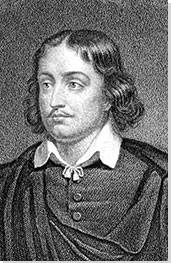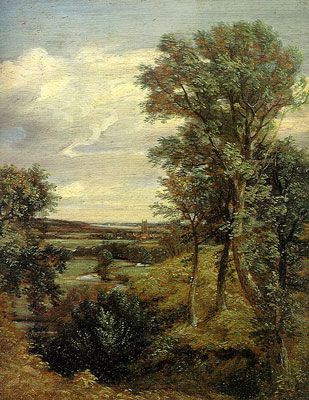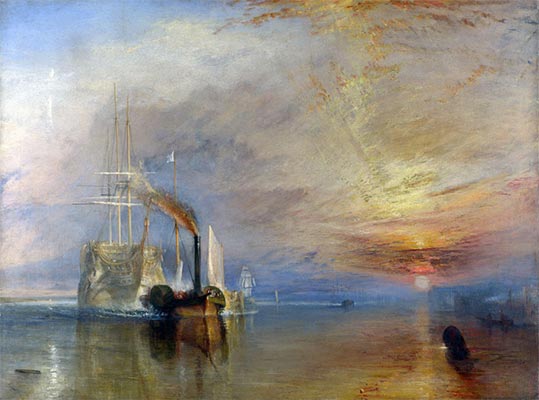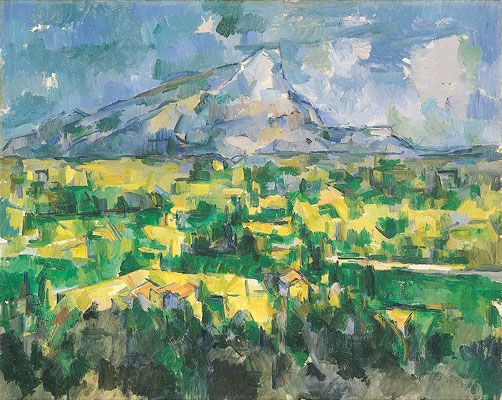Summary of Claude Lorrain
Claude Lorrain made paintings in which the sun, earth, and water seem to reverberate with emotion. His name is inseparable from seventeenth-century landscape painting, his works characterized by a Baroque classicism which is especially evident in his depiction of antique architecture, and his emphasis on dramatic contrasts of light and shade. More often than not, Claude's works were paeans to the beauty of nature rather than portrayals of grand human virtues - as was more common for painters of his style and generation - but they were nonetheless generally representations of historical or mythical scenes. At a time when landscape painting was still far from being considered a significant genre, he thus laid the foundations for the historical landscape tradition that would come to dominate French and English painting for at least 150 years.
Accomplishments
- Claude Lorrain infused the tradition of idealized landscape painting, learned from predecessors and contemporaries such as Annibale Carracci and Nicolas Poussin, with an unprecedented empirical accuracy. He spearheaded a new method of landscape painting, working outdoors from detailed observation, and blending classical idealism with naturalistic detail to produce work almost more beautiful than nature itself.
- Claude's depiction of ancient ruins in his paintings has a double-impact, at once reminding us of the passage of time and of the endurance of the structures, thus recalling the medieval concept of Memento Mori (a living reminder of death). A powerful embrace of the ephemeral and the eternal is at work in these paintings.
- As much as Claude expressed his angst about the passage of time and the temporal nature of man-made things, he was nonetheless one of the first artists to understand this historical significance of his work, and strove to preserve its history through an orderly documentation of his oeuvre in the Liber Veritatis ('Book of Truth').
- Claude not only made pioneering advancements in the portrayal of natural light-source, but was also one of the first artists to pay close attention to sunrises and sunsets in his work. The iconic seascapes in which he explored these effects were inspirational for nineteenth-century English landscape painters such as J.M.W. Turner.
Important Art by Claude Lorrain
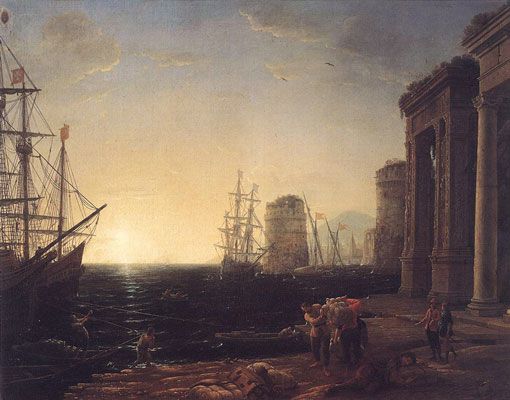
Harbor Scene at Sunset
In spite of its nominally realistic subject, Harbor Scene at Sunset is a pure work of the imagination. Huge ships approaching the shore appear almost as hallucinatory silhouettes against the waning sun (though the one to the left seems weighty enough, as it is hauled to anchor). To the right, a further group of ships is dotted amongst lighthouse towers aligned with ancient gateways; the monumental structure in the right foreground is based on the Arcus Argentarium ("Arch of the Silversmiths") constructed in the third century AD at San Giorgio in Velabro, Rome. In front of it, men load and unload the boats, while another sleeps on a pile of cargo, a pair of young lovers skipping past. Illuminating the whole scene, with its majestic swaths of sea and sky, is the finely gradated light of the setting sun.
This work is exemplary of a new form of imagery developed by Claude in his early maturity, involving idealized harbor scenes populated with architectural features adapted from ancient and contemporary buildings. Claude's harbor paintings are also unique in their pioneering use of sunlight as the only depicted source of illumination. Though experiments with strong contrasts of light and shade were exemplary of the seventeenth-century Baroque tradition, Claude's unique contribution was to place the horizon line so low that the sky and sun seem to pervade the entire scene, dwarfing human figures and creating what the art historian Sergei Daniel calls "stately pageants staged by nature". Claude began creating his seaport scenes in the 1630s, and this work represents an evolved version of the style, with darker ultramarine tones and a greater overall warmth of color. Figures also assume a stronger sense of solidity and corporeality in Claude's harbor-scenes of the 1640s.
Works such as Harbor Scene at Sunset have generated much critical debate. While generally considered to be peaceful, uncomplicated images appealing to bourgeois taste, upon inspection an alternative interpretation of their atmospheric energy emerges. The art historian Itay Sapir, for example, argues that the binary composition of land and sea, and the depiction of dawn and dusk in these works represents the classical mythological dialectic between the Apollonian and Dionysian, the dichotomy of "the orderly and the chaotic, the civilized and the wild". In any case, historical significance of Claude's harbor-scenes is not in doubt. The nineteenth-century English artist J. M. W. Turner, for example, was profoundly moved by the series, and drew heavily upon Claude's compositional style and use of light in aerial-perspective works such as The Harbor of Dieppe (1826) and Regulus (1828).
Oil on canvas - Royal Collection, Buckingham Palace Picture Gallery
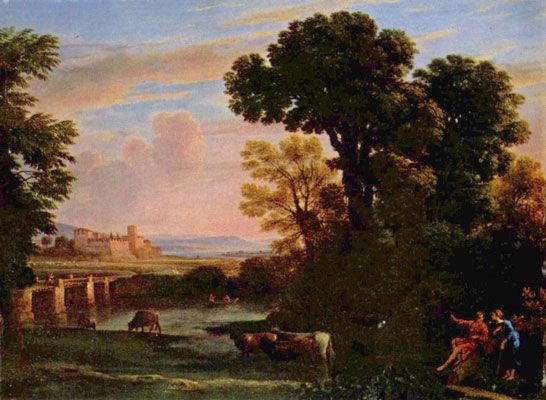
Pastoral Landscape
The eye of the viewer is perhaps drawn initially to the two figures in the right foreground: a man dressed in red and a woman in blue, deep in animated conversation. The man's extended arm and leg serve as take-off points, gesturing towards the expansive scene unfolding behind him, where grazing cows tread across the meadow-path to a small bridge. On the river below a boat is rowed by two men, while on the field behind a further figure can be made out astride a horse; in the distance, an ancient castle, and mountains stretching away beneath a clouded sky. As in much of Claude's work, the sky itself is a dominant feature, its delicate pink and blue tones offset against the dark of the framing foliage, the whole scene arranged according to the rule of thirds, providing a classical visual balance.
Commissioned by the Swiss military engineer Hans Georg Werdmüller, this painting exemplifies Claude's idealized representations of pastoral life, wherein the natural world becomes a place of refuge from the chaos of urban life. Suitably enough, the human figures populating this idyll are engaged in contemplation or leisure activities rather than the grinding agricultural toil which was the lot of the contemporary rural worker. Art historian E. P. Richardson notes that "the open green space beneath the trees where the cattle graze is a kind of invitation to the spectator to stroll there in his imagination and enjoy the beauty of the evening." The painting is more accurate, however, in its depictions of flora, fauna, and light. Claude was committed to detailed plein-air study, trying "by every means", according to his biographer Joachim von Sandrart, "to penetrate nature, lying in the fields before the break of day and until night in order to learn to represent very exactly the red morning sky, sunrise and sunset and the evening hours." The effects of this painstaking labor are evident in works such as Pastoral Landscape, which is amongst those which have earned Claude his unparalleled position in art history.
Several elements of the painting, as identified by art historian Marcel Röthlisberger, symbolize the passage of time, and can be seen as leitmotifs within Claude's work: "[f]oremost in our mind are his spectacular sunrises and sunsets, the rays of the sun, cloud formations, ripples on the water. We experience suction into the remote distance in terms of space and time - the time a traveler requires to cover the distance. Roads cross the images from one side to the other, but very rarely connect with the nearest foreground; figures move on them, other figures are caught in action [...] Man-made furnishings allude to time: intact and broken bridges, running mills, boats, sumptuous or humble buildings (ancient, medieval, or modern) versus crumbling ruins."
Oil on copper - Yale University Art Gallery
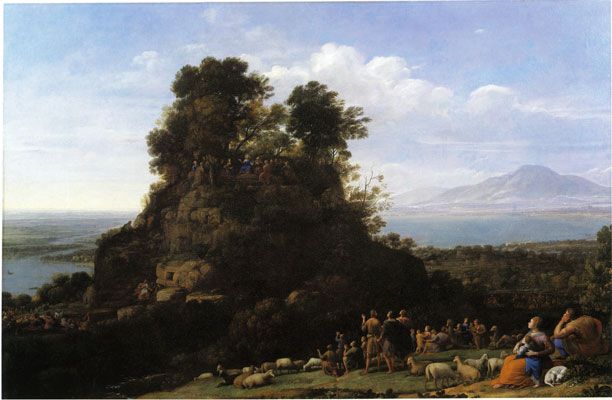
The Sermon on the Mount
This painting features many of the typical motifs of Claude's landscapes, including rivers, forests, and distant mountains, all laid out in an atmospherically expansive perspective. The depth of the horizon also allows Claude to provide a condensed Biblical geography within the pictorial space, incorporating Mount Lebanon in the distance, the Sea of Galilee to the right, and the Dead Sea and River Jordan to the left. In the foreground, on a summit of Mount Tabor, Christ and his apostles preach to an ardent crowd of disciples, interspersed with more nonchalant groups of sheep. The diminishing size of the figures enhances the illusionistic depth of the canvas.
Biblical themes feature more prominently in Claude's paintings from the 1650s onwards, as he begins to work on a larger scale, and to focus on heroic and historical subject-matter to a greater extent. The sermon depicted here is drawn from the Gospel of St. Matthew, and includes Christ's expositions on Christian ethics through the Beatitudes; he also pronounced the Lord's Prayer to the multitudes for the first time during this speech. The religious theme of the work is complemented by the noble scale of the landscape, characterized by rich and brilliant blues, painted using ultramarine. This was the most expensive and coveted pigment available to painters at the time, made from the precious stone lapis lazuli.
Though Claude is remembered for his landscapes, works such as The Sermon on the Mount indicate the equal significance of history and myth to his oeuvre, an emphasis which was similarly important to his followers. It was not until the mid-nineteenth century that the landscape would be wholly emptied of human narratives and celebrated entirely on its own terms, by the post-Romantic painters of the Naturalist and Realist schools; though Claude's work very much lays the groundwork for this advance.
Oil on canvas - Frick Collection, New York
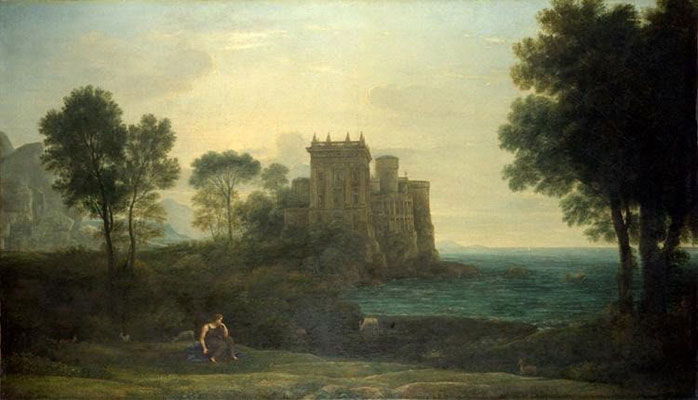
Landscape with Psyche Outside the Palace of Cupid (The Enchanted Castle)
The palace of the Roman God of Love Cupid occupies the central position in this painting. Nestled on a cliff above an icy blue ocean, it exudes the qualities of both Renaissance classicism and Baroque grandeur. In the foreground, Cupid's lover Psyche is shown brooding pensively, deer grazing on the grassy shoreline behind her; the melancholic atmosphere is enhanced by the depiction of hazy and misty light, and the green-blue color-palette.
Painted for the Neapolitan aristocrat Lorenzo Onofrio Colonna, this work, more commonly known as The Enchanted Castle, represents a scene - though it is not clear which - from the story of Psyche and Cupid, as recounted in the second-century Roman writer Apuleius's The Golden Ass. In the first part of Apelius's story, Psyche's father is informed that his daughter will only find a husband if she lives atop a rocky cliff exposed to the elements. The goddess Venus, jealous of Psyche's beauty, instructs her son Cupid to visit Psyche, and to compel her to fall in love with a hideous monster. Instead, Cupid falls in love with Psyche himself, arranging to meet her in secret during the night. Later, on disobeying his command never to look at his face, Psyche is banished from Cupid's castle and captured by Venus, who sets her a series of impossible tasks. Eventually, moved by her repentance, Cupid rescues Psyche, and requests that Jupiter bestow immortality on her so that they may live together. The distress in which Psyche is portrayed in this painting could either indicate her exposure on the mountain prior to her meeting with Cupid, or her desolation after his abandonment of her.
The story of Psyche and Cupid was commonly told at weddings during Claude's era, and some art historians have suggested that the painting was created for the occasion of Colonna's marriage to Marie Mancini, a sometime lover of King Louis XIV, whose courtship with Colonna paralleled the themes of Psyche and Cupid's story. Just like Psyche, Marie had been the victim of banishment, after her affair with King Louis was deemed politically unsuitable. She had also made an arduous trip to Italy for her final union with Lorenzo, a journey seen as comparable to the trials of Psyche. This work has traditionally elicited a strong emotional response from its viewers, though critics continue to argue over whether its intended tone is meditative or sorrowful. The Romantic poet John Keats was fascinated by the work, which inspired him to compose his famous "Ode to a Nightingale" (1819).
Oil on canvas - The National Gallery, London
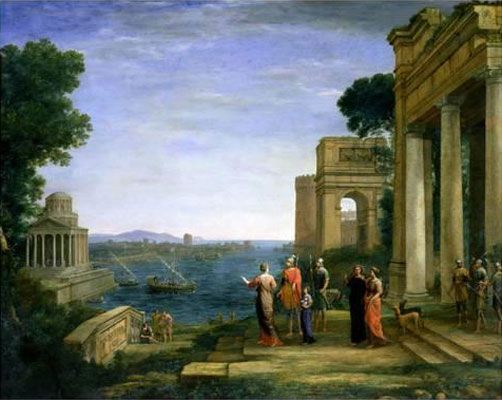
View of Carthage with Dido and Aeneas
A series of ancient architectural constructions, including a Roman rotunda, colonnade, and arches, form an enclosure for a harbor extending outwards into a ship-filled bay, with mountains receding into the distance. This classical landscape illustrates an episode from the fourth book of the Roman poet Virgil's Aeneid. After the downfall of Troy - as recounted in Homer's Iliad - the Trojan hero Aeneas wanders for six years, before arriving in Carthage, where he meets and falls in love with Queen Dido. They marry and rule Carthage for a time, before the god Mercury - a messenger of Jupiter - arrives to remind the warrior of his destined task: to found the city of Rome. Aeneas plans to leave Carthage without Dido's knowledge, but as he escapes with his men on the ships, she discovers his plan, and arrives at the harbor. It is this moment of desperate realization that Claude depicts, with the queen in the foreground gesturing towards the departing fleet, questioning a circle of surrounding generals.
The elongation of human figures in this painting, and the clear and even spread of light, are typical of Claude's later work. Painted, like The Enchanted Castle, on commission for the nobleman Lorenzo Colonna, the columns in the picture may be a tribute to the artist's patron, whose final name means "column" in Italian. Colonna's family also claimed descent from Aeneas, lending further gravity to the subject of the work.
This painting also gives a good indication of the use and significance of architectural ruins in Claude's work. Sergei Daniel explains that "the ruin motif is associated with a concept essential to Claude's philosophy, the contrast of Time and Eternity, the transient and the eternal, of human and universal life. In Claude's painting, as in all historical landscapes, ruins fulfill a function similar to that of the skull in vanitas still lifes: they are a memento of mortality, a symbol of the transitory nature of human existence."
Oil on canvas - Kunsthalle Hamburg, Germany
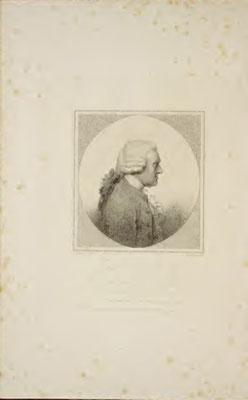
Liber Veritatis
The inside cover of Claude Lorrain's Liber Veritatis - "Book of Truth" - contains a small self-portrait. Each subsequent page features a painting in reproduction, with details of date and patronage and a reference number and signature printed on the reverse. An occasional note on subject matter is also included, as are two handwritten indices, one produced by Claude himself, the other after his death. Due to the different dimensions of the various artworks included, some early reproductions appear slightly stretched and squeezed, though these issues were gradually worked out over time, and the reproductions in later sections of the book are more accurate.
According to Claude's biographer Filippo Baldinucci, he first began keeping records of his work in order to safeguard them against forgery: "[w]henever he was brought pictures for inspection, which were said to be his, he would show his visitor the book, saying: 'I never send out a work from here which, after having completely finished it, I have not copied with my own hand in this book. Now I should like you yourself to judge, therefore look through this book and see if you recognize your picture'; and in this manner, since the forger, although he has stolen the composition, had been quite unable to put in all the details, the difference was immediately apparent to all eyes and the deception was exposed." Marcel Röthlisberger offers a slightly different explanation, suggesting that Claude was more concerned with unconscious imitations based on past encounters with his work than detailed and direct copies. In any case, Claude left the Liber Veritatis book to his adopted - possibly biological - daughter, Agnese upon his death. When Agnese died in 1716 the book passed in turn to Claude's nephew Joseph; around this time the second index was added. In the late eighteenth century five more drawings were included, bringing the total number of works reproduced in the book to 200. Acquired by the British Museum in 1957, the book was re-bound in the 1970s and remains accessible to readers.
Claude's last painting, Ascanius Shooting the Stag of Sylvia (1682), was not included in the volume, as he had not had a chance to reproduce it by the time of his death. Despite this and a small number of further omissions, this work offers an unparalleled level of insight into the life and work of one of the most significant European painters of the past 500 years, and is a remarkable, sui generis work of art-historical record-keeping.
Pen and watercolor - British Museum, London
Biography of Claude Lorrain
Childhood
Claude Gellée was born in the small village of Chamagne, in the Vosges region of the Duchy of Lorraine, in north-eastern France. His tombstone is inscribed with the year "1600" to indicate the year of his birth, though historians have suggested that a more likely date is 1604 or 1605. Living for most of his life in Italy, he became known as Claude le Lorrain (Claude of Lorraine), and the name has stuck; English speakers now generally refer to him as Claude Lorrain, or simply as Claude.
He was the third of five sons born to poor parents who passed away when he was twelve. Following a brief stay with his printmaker brother in Freiburg, during which he trained as a pastry chef, Claude travelled to Rome to pursue the same line of work.
Education and Early Training
In Rome, Claude began to develop an interest in art. Though facts about his early training remain unclear, one of his biographers, Joachim von Sandrart, suggests that he initially learnt art at Naples from an artist of German origin, Goffredo Wals, during 1620-22. Then, in Rome, Claude spent three years training under Wals's teacher Agostino Tassi, a leading Italian artist of ideal landscapes and illusionistic architectural frescoes. It was under Tassi's tutelage that Claude developed his basic artistic vocabulary, including his understanding of perspective, and his taste for landscapes and coastal scenes.
Leaving Rome for Nancy, the capital of Lorraine, in 1625, Claude is believed to have worked for around a year as an assistant to the neo-classical artist Claude Deruet. According to his second biographer, Filippo Baldinucci, he assisted the senior artist by painting the backgrounds for a series of frescos in a Carmelite church, which has since been destroyed. Claude returned to Rome in 1626 and lived for the next 25 years in a house in Via Margutta, close to the Spanish Steps and the Trinita dei Monti. In 1650, he moved to Via Paolina - now Via del Babuino - where he spent the remainder of his life.
Claude remained somewhat distanced from the city's academic circles, although in 1633 he joined the Accademia di San Luca ("Academy of Saint Luke"), an artists' association under strong Papal influence. We also know that early in his career, Claude travelled to various regions of Italy, France, and Germany, including Marseilles, Genoa, Venice, and Bavaria, to study a range of landscapes first-hand. Von Sandrart reported that Claude would often make rapid sketches and oil paintings, either at dawn or at dusk. His first known painting, Landscape with Cattle and Peasants (1629), now at the Philadelphia Museum of Art, already reflects a sophisticated compositional technique, and a highly personal style.
Claude interacted selectively with other artists, but his friendship with fellow Frenchman and landscape painter Nicolas Poussin is relatively well-known. However, very little is known about Claude's personal life, especially as he became more solitary in his forties. Although he never married, he adopted a daughter, Agnese (1653-1713), who lived with him in Rome, and who may have been his biological descendent through a relationship with a house-servant of the same name. Others living with him at various times include a pupil, Giovanni Domenico Desiderii, between 1633 and 1656, and nephews Jean and Joseph from around 1680 onwards.
Although Claude lacked formal education, and was generally presumed to be academically ignorant - an assessment based partly on his writing skills - his paintings demonstrate a substantial knowledge of the Bible, and of Classical literature such as Ovid's Metamorphoses and Virgil's Aeneid.
Mature Period
During the 1630s, Claude gained widespread recognition for his work, and began to receive commissions from monarchs and nobility across Europe. These included the French ambassador in Rome (in 1633), the King of Spain (1634-35), Pope Urban VIII (1635-38), and several cardinals and noblemen from France and Italy. He was soon established as one of Italy's leading painters of ideal landscapes, much like Poussin. A consummate professional, Claude knew the value of his art, and began to charge high prices for his work, which was always produced on commission. At times he employed agents to initiate the sale process for him, only later negotiating directly with his patrons.
By this point, Claude had also begun to include more human figures in his work, an unusual move for a historical landscape painter at this time. These renderings were criticized as "notoriously feeble" by the twentieth-century critic Roger Fry, while other writers have suggested that Claude outsourced his figure-painting to other artists (probably a misconception, as there is no strong supporting evidence for the theory). His biographers differ on this aspect of his work: Baldinucci notes that Claude would joke that he charged for his landscapes and offered the figures for free, but Sandrart is more forgiving, arguing that Claude was continually attempting to improve his skills, as evidenced by the numerous studies of human figures in groups included with his sketches and preparatory drawings.
Having a strong sense of the value of his own work, Claude produced a meticulous record of his production to protect his work from forgery. The book in which this record is recorded, which came to be known as the Liber Veritatis or "Book of Truth", is now stored at the British Museum, London. It contains 195 drawings in more or less in chronological order, meticulous reproductions of almost every painting Claude ever produced. This astounding document also includes details of dates and patrons for each work. Having organized his entire œuvre in this manner, Claude would turn to it as a library of motifs when creating new works, and the Liber Veritatis has proved an equally invaluable document for historians and researchers.
Late Period
Claude's rate of production slowed down significantly during his later years. The works of his last few decades, however, do indicate stylistic developments, being larger in size, and frequently portraying heroic subject-matter in great detail. During the later years of his life, Claude's work also showed a tendency towards a cooler color-palette, which grants his paintings from this period a quality of mystery and solemnity. Another feature that became obvious during this final phase was his depiction of elongated figures. Of one such painting, a caption in the Ashmolean Museum in Oxford notes that "[t]he hunters are impossibly elongated - Ascanius, in particular, is absurdly top-heavy". This abrupt shift in style is believed by some critics to have been prompted by the artist's failing eye-sight, though others see this speculation as far-fetched.
The Legacy of Claude Lorrain
In his own lifetime, Claude's landscape paintings influenced artists not just in Rome but across the whole of western Europe. In particular, Claude's palette and compositional style had a significant influence on young contemporaries such as Angeluccio and Salvator Rosa; his French admirers included Claude-Joseph Vernet, who was inspired by Claude's sensitive atmospheric effects.
However, the true extent of Claude's historical significance only became clear in the decades and centuries following his death. At a time when landscape painting had not assumed the status it would later be granted, Claude spearheaded its cause, laying the groundwork for the traditions of French and English historical landscape painting which followed across the eighteenth and nineteenth centuries. Indeed, his name, like that of his compatriot Poussin, has become synonymous with the very idea of landscape painting as such, and his aesthetic was particularly vital to the Romantic landscape style established in the early-nineteenth century by English painters such as J.M.W. Turner, John Constable, and even Samuel Palmer. Constable summed up the appeal of Claude's work as follows: "all is lovely - all amiable - all is amenity and repose; the calm sunshine of the heart".
Such was the influence of Claude's work that during the eighteenth and nineteenth centuries picturesque artists and connoisseurs would carry around devices known as Claude Glasses, for simplifying and framing natural landscapes. These were small, convex, tinted mirrors, through which vistas could be viewed while facing away from them; the mirrors were thought to bring the same tonal range and formal harmony to the scene as Claude's paintings achieved. The name, however, was purely a homage, as there is no evidence that Claude used such a device.
Influences and Connections

-
![Titian]() Titian
Titian - Paul Bril
- Adam Elsheimer
- Annibale Caracci
Useful Resources on Claude Lorrain
- Claude LorrainBy Sergei Daniel
- Claude Lorrain: Painter & EtcherBy George Grahame
- Ideal Landscape: Annibale Carracci, Nicolas Poussin and Claude LorrainBy Margaretha Rossholm Lagerlöf
 Ask The Art Story AI
Ask The Art Story AI